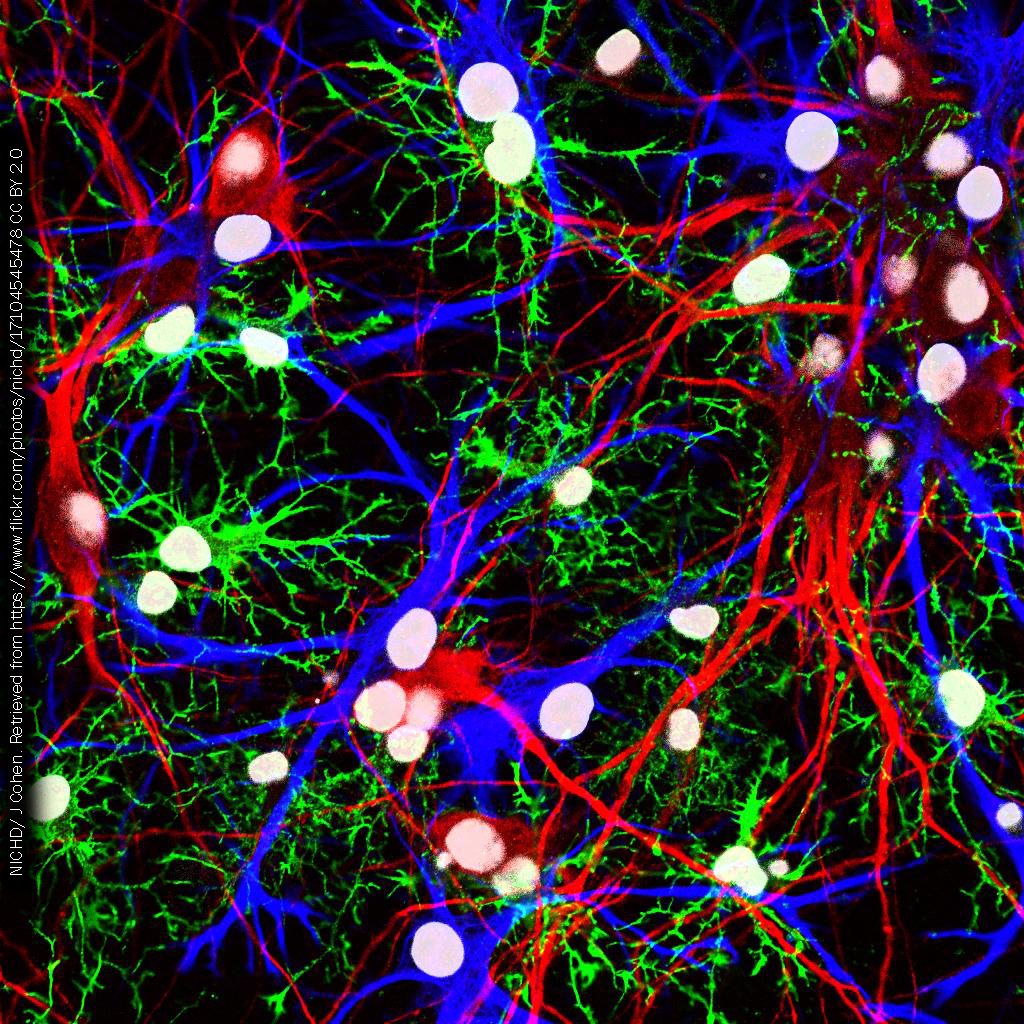Neurons as Cells

| Neurons and Glia | |
|---|---|
| Neurons = nerve cells | Glia = glial cells |
| “Thinking” cells of the brain | Major role in support and nutrition of the brain |
| Receive, process and transmit information by manipulating the flow of charge across their membranes | Do not manipulate information |
Note the parallels:
|
Maintain the internal environment so that neurons can do their jobs |
| Each neuron does in miniature, what the entire nervous system does as an organ | Astrocytes – borders and chemical balance |
| Oligodendrocytes – insulation | |
| Microglia – immune defense | |
| Ependymal cell – make fluid | |
Neurons are cells. That’s almost a tautology, but as we saw in The History of Neuroscience, it was not always thus. The Neuron Doctrine was solidified in the first half of the 20th Century, then validated by electron microscopy and cell culture techniques in the second half. We now accept that neurons are cells just like any other in our body.
While that is true, it’s also true that neurons are unique in many ways. The brain, 2% of the human body by weight, uses 1/4 to 1/3 of the energy we consume. How is the neuron managing its energy requirements? A similar problem is created by the need for some neurons to send information over huge distances. For example, in a giraffe, a neuron with a cell body 1/100,000th of a meter in diameter must support an axon that extends over 5 meters. This not only requires exquisite energy management, but an entire distribution system for the products made in the cell body and needed in the axon terminals.
We will first introduce learning objectives that emphasize how neurons are like other cells:
- Compare and contrast neurons and glial cells.
- Describe some of the microscopic techniques used to examine nerve cells.
- Explain how the shape of neurons relates to their information processing properties.
- State the purpose of myelination and its main features.
- List the organelles found in neurons and the basic function of each.
Media Attributions
- Neurons and glia © Jeffrey Cohen, NICHD is licensed under a CC BY (Attribution) license

